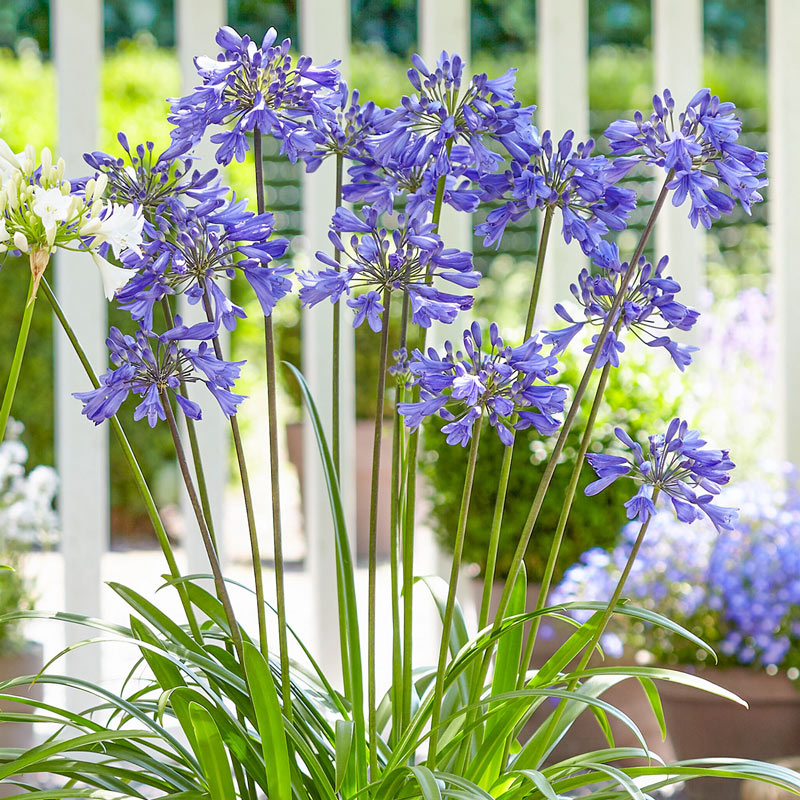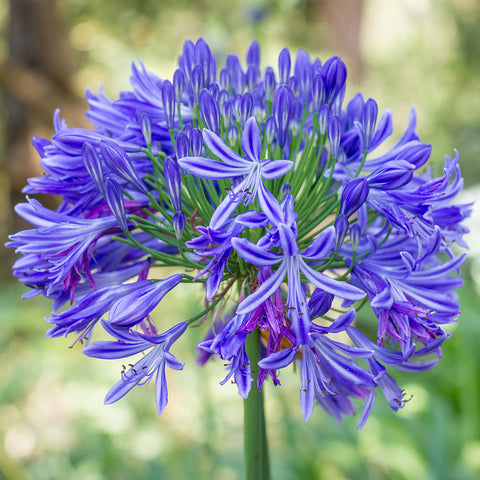Agapanthus Growing Conditions: Soil, Sunshine, and Watering
Wiki Article
Grasping the Art of Agapanthus Care: Vital Actions for Healthy Growth and Dynamic Blooms
In the realm of cultivation, the farming of agapanthus stands as a fulfilling endeavor for those who seek to nurture these elegant blooming plants. From selecting the best selection to understanding pruning techniques, the trip in the direction of growing growing agapanthus plants is diverse and holds the essential to opening the complete capacity of these agricultural gems.
Choosing the Right Agapanthus Range

When picking the appropriate Agapanthus variety for your yard, take into consideration variables such as climate viability, blossom color, and growth routine. Agapanthus, commonly called Lily of the Nile or African lily, is available in a selection of shades varying from tones of purple and blue to white. Pick a blossom color that matches your existing garden scheme to develop an unified landscape. Furthermore, consider the climate in your region to make certain the Agapanthus range you pick can thrive in your specific conditions. Some ranges are extra forgiving of cold temperatures, while others like warmer environments. Comprehending the growth routine of different Agapanthus ranges is important for appropriate positioning within your garden. Some varieties have a clumping growth routine, suitable for boundaries or containers, while others have an even more spreading nature, suitable for ground cover or mass plantings. By thoroughly examining these factors, you can select the perfect Agapanthus range to boost the beauty of your yard.
Perfect Planting Problems
Taking into consideration the ideal ecological needs is necessary for successful Agapanthus farming. Agapanthus plants are sensitive to chilly temperatures and must be safeguarded from frost during wintertime months.To ensure healthy development and vibrant blossoms, plant Agapanthus bulbs at a deepness of regarding 2-4 inches and area them 8-12 inches apart. Mulching around the base of the plants assists maintain moisture and reduces weed development.
Watering and Fertilizing Tips
Maintaining proper wetness degrees and giving important nutrients are essential elements in the care routine for Agapanthus plants. When it comes to watering Agapanthus, it is important to strike a balance. These plants like consistently moist soil but are susceptible to root rot if overwatered.Feeding Agapanthus is important for advertising healthy development and respected blooms. Use a well balanced fertilizer, such as a 10-10-10 formula, in the early spring as new development arises. By following these watering and fertilizing suggestions, you can ensure your Agapanthus plants grow and produce lively, lasting blossoms.
Trimming Methods for Agapanthus
Trimming Agapanthus plants at the ideal times and with proper strategies look at this site is crucial for preserving their health and wellness and promoting optimal growth and blooming. The ideal time to trim Agapanthus remains in late winter or early springtime before brand-new growth emerges. Start by getting rid of any type of yellowing or dead leaves near the base of the plant. Cut them as close to the ground as possible without damaging the arising shoots.Deadheading spent blossoms can additionally redirect the plant's energy into generating more flowers rather than setting seeds. If you want to gather seeds for breeding, leave some blossoms to dry and fully grown on the plant.
Bear in mind to make use of tidy, sharp tools to make specific cuts and minimize the risk of introducing diseases. Agapanthus. Regular trimming will certainly assist keep your Agapanthus looking cool and healthy while guaranteeing a plentiful display screen of attractive flowers
Handling Common Bugs and Illness
After ensuring proper trimming methods for Agapanthus, it is crucial to deal with common insects and diseases that can impact the wellness and vigor of these plants. Agapanthus plants are typically sturdy but can still come down with certain problems. One usual insect that affects Agapanthus is the Agapanthus gall midget. This small, orange fly lays its eggs in the vegetation, causing altered growth and blossom buds that stop working to open up. To fight this pest, trim and damage any type of affected plant components and consider using insecticidal soap.An additional typical issue is fungal fallen leave area, which provides as dark lesions on the leaves. To avoid fungal illness, ensure good air blood circulation around the plants, avoid above watering, and get rid of any contaminated leaves without delay. Furthermore, Agapanthus plants can experience from origin rot if they are grown in improperly draining soil. To avoid this, plant company website Agapanthus in well-draining dirt and prevent overwatering. By being cautious and taking prompt activity versus conditions and parasites, you can help your Agapanthus plants flourish and produce dynamic flowers.

Conclusion
To conclude, grasping the art of agapanthus care involves selecting the ideal variety, offering excellent planting conditions, correct watering and fertilizing, proper pruning strategies, and dealing with common pests and diseases. By adhering to these vital steps, you can guarantee healthy development and vibrant flowers for your agapanthus plants. Remember to frequently monitor and keep your plants to advertise their general health and longevity.To ensure healthy development and dynamic flowers, plant Agapanthus light bulbs at a deepness of concerning 2-4 inches and area them 8-12 inches apart. By complying with these watering and feeding pointers, you can guarantee your Agapanthus plants prosper and generate vivid, resilient flowers.
One common pest that impacts Agapanthus is the Agapanthus gall you could try here midget. Furthermore, Agapanthus plants can endure from origin rot if they are grown in improperly draining soil. By adhering to these essential actions, you can ensure healthy and balanced development and vibrant blooms for your agapanthus plants.
Report this wiki page